SUMMARY
This is AI generated summarization, which may have errors. For context, always refer to the full article.
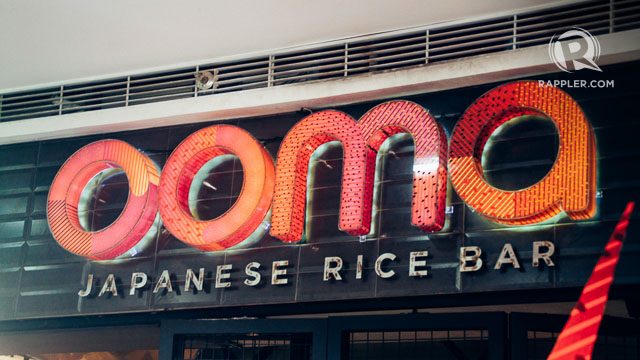
MANILA, Philippines – Ooma, a play on the casual Japanese expression umai (うまい), or roughly, “good,” is an apt name. The restaurant commits to this “good,” without getting caught up in taking itself too seriously. Ooma is hip and edgy, yet also warm and easy-going – totally not stuffy.
Ooma is local culinary wunderkind Bruce Ricketts’s second partnership venture with restaurateurs the Moment Group, after Mecha Uma’s success at Bonifacio Global City. In a way, Chef Bruce has also returned to his hole-in-the-wall roots in Sensei Sushi, but has now cast a wider net by setting up shop at the Mega Fashion Hall along EDSA.
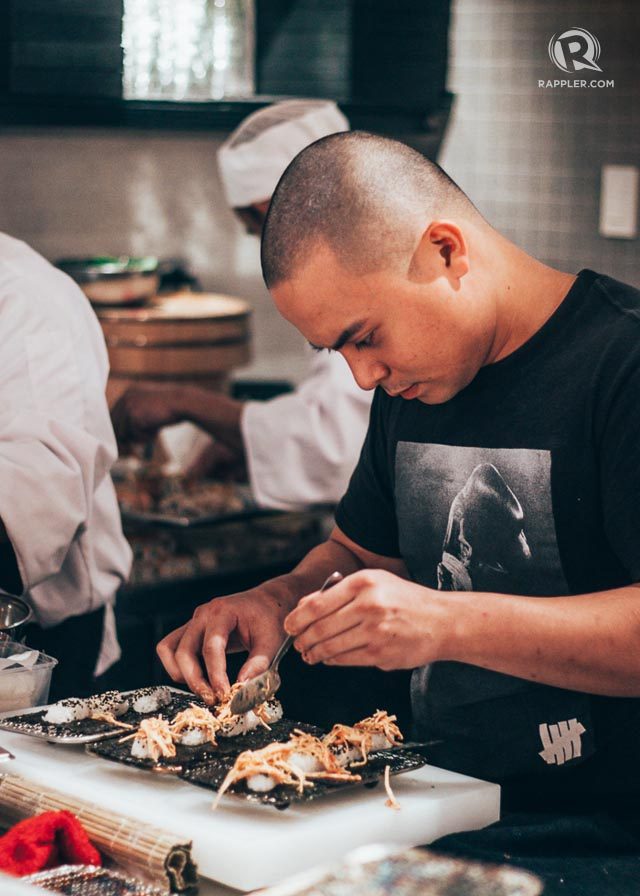
The shadow that Ricketts’ previous work casts, of course, still looms large. The comparisons can’t be helped. However, Ooma is an entirely new concept and takes a different approach – catering to a wider clientele with unique demands.
His artistry and inventiveness with Japanese cuisine has undoubtedly carried over to Ooma, but the prices are now somewhat democratic. The food will not burn a huge hole through your wallet, but don’t barge in looking for Chef Bruce’s prodigious omakase or tasting menus.
At Ooma, it’s all about the warmth of comfort food, as Ricketts says, “[It’s] food that I would like to eat on my days off.”
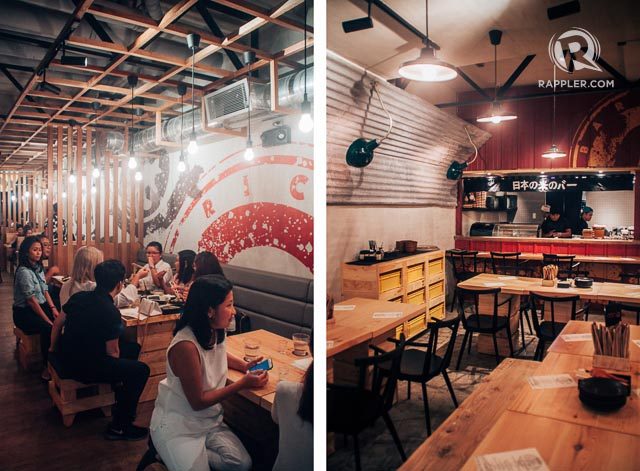
The space evokes the bustling Tsukiji Fish Market in Tokyo to create a semblance of both community and intimacy. All sorts of weary souls are welcome: friends, families, and even solo diners.
Ooma was opened to the public on July 8. Their serving portions are manageable and is great for sharing, and the à la carte menu is well-curated and focused. You can even feast at Ooma on a decent budget. Here are several dishes worth trying:
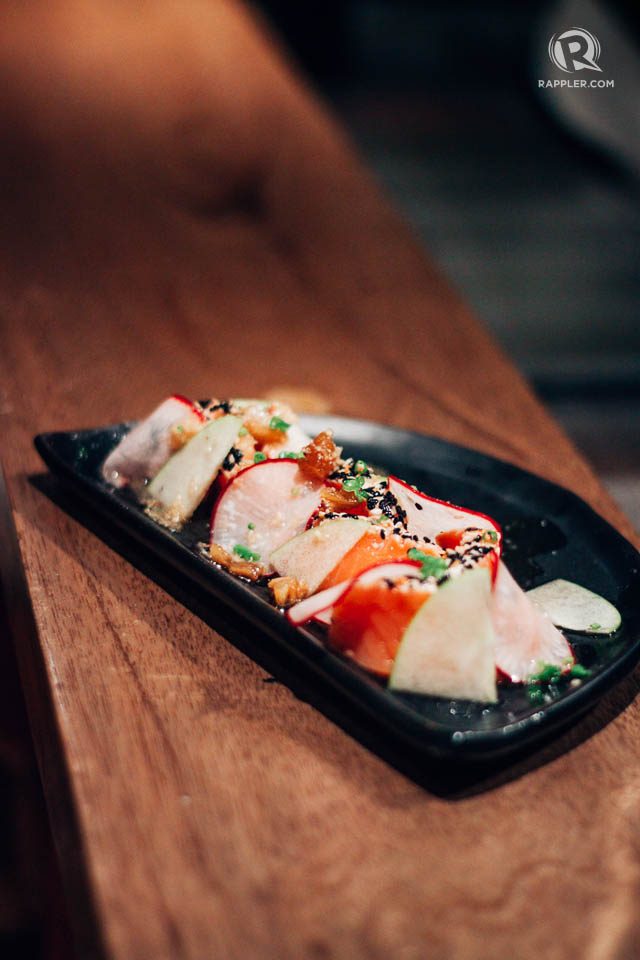
Salmon Tataki (P195)
Ooma’s salmon tataki is miles better than your run-of-the-mill sashimi, which immediately sets the restaurant farther apart from any regular joint frequented by Japanophiles or otakus.
Tataki calls for the salmon to be delicately seared with a blowtorch. The roasted pineapples, pickled red radish, and the ginger garlic sauce deliver complex flavors. As expected, the sesame crust lends the dish some nuttiness. The pineapples and radish pickles complement the crusted salmon with their sweetness and acidity.
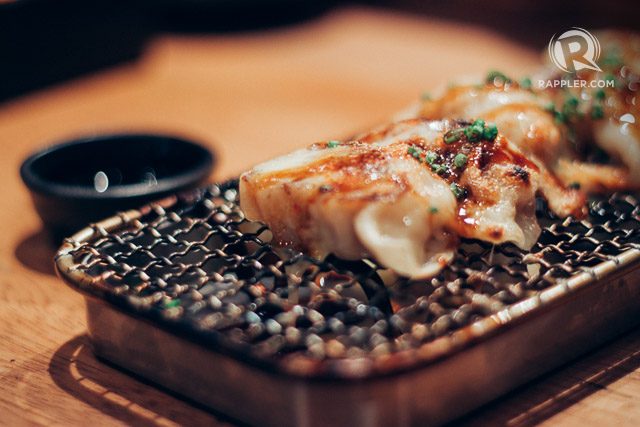
O-Gyoza (P235/5 pieces)
Ooma tops its gyoza with mozzarella and cheddar cheese gratin – sprinkled with togarashi (chili pepper) and drizzled with unagi sauce (usually goes with eel, made of shoyu/soy, sugar, and mirin/sweet rice wine). The cheese is an obvious crowd-pleaser, but it is deliberate with the unagi sauce – a balance of sweet and savory.
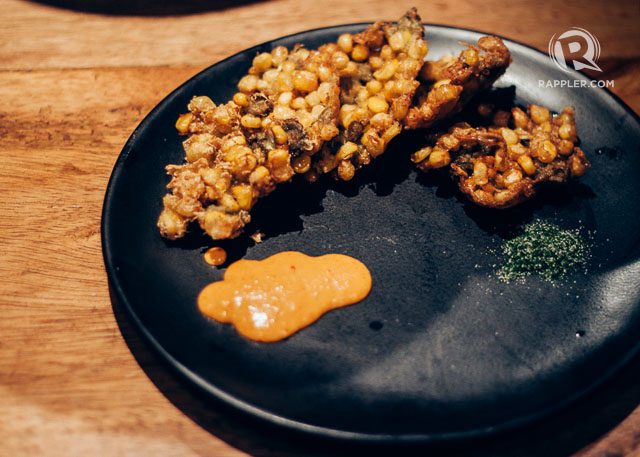
Corn & Oyster Kaki-age (P155)
Dip these Japanese sweet corn and oyster crispy fritters in Kimchi mayo dressing, and then the nori salt. Just restrain yourself from quickly popping them in your mouth one after the other. They are addictively crispy.
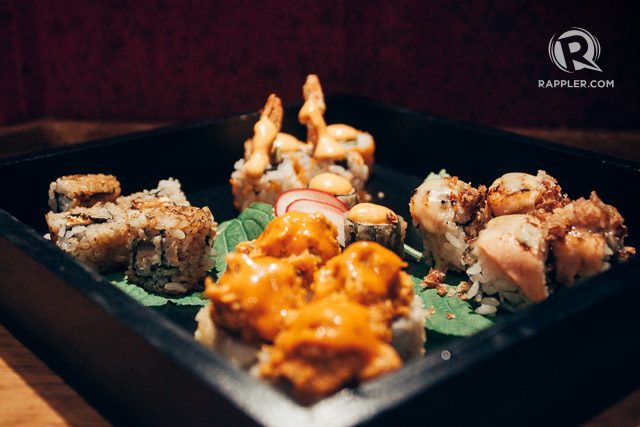
Maki and Aburi Maki
No food has popular recall as a quintessential Japanese fusion dish than maki – which Ooma does excellently without being gimmicky. The maki here is straightforward but still has Chef Bruce’s trademark creativity. Ooma also does aburi (literally, “to burn”) makis, using a Japanese method of searing the food – here, with a blowtorch.
At Ooma’s opening party, we were served an omakase box consisting of Ebi Tempura Maki (P225), Spicy Tuna Maki (P245), Salmon Belly Maki (P245), Salmon Skin Aburi Maki (P265), and Hamachi Maki (P335). Set menus like these, however, are not available to the public, but you can order separately – each order has 6 pieces.
Among these, the Salmon Belly Maki and the Spicy Tuna Maki stood out. The salmon belly used in the former is carb-free but crispy. The Gochujang aioli on the latter may flare the tongue up, but those with a penchant for Korean heat will love it.
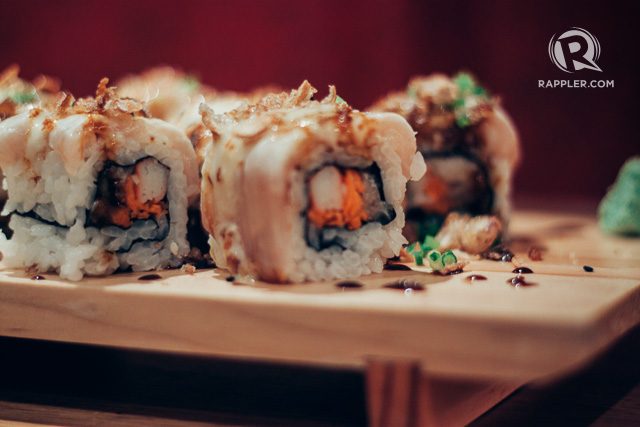
Hamachi and Kani Aburi Maki (P345)
Torched Hamachi (Yellowtail) is put atop the roll with kani and pickled carrots – creating a complex flavor profile from these common maki ingredients. Fried shallots add a nice crunchy texture and a generous drizzling of unagi sauce gives it a candied accent.
There are also thin paintbrushes on the table for you to brush some shoyu on your maki.
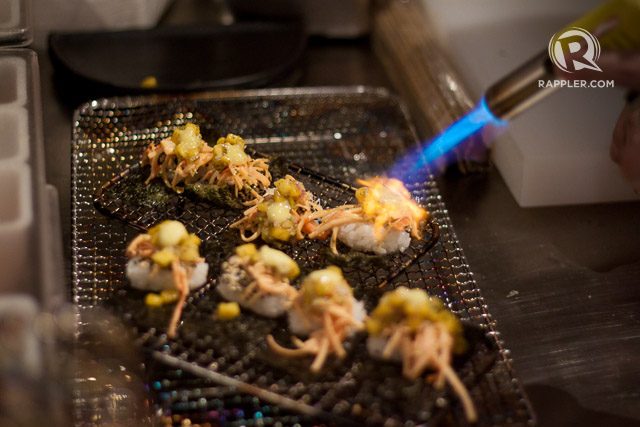
California Taco-Maki (P135/2 pieces)
With the California Taco-Maki, Japan meets America – meets Mexico – fitting for a cantina as an izakaya.
Instead of having the familiar cone roll eaten on the fly, this open-faced temaki takes inspiration from taco sliders. Chef Bruce, however, has torched (i.e. aburi-style) the usual suspects: kani sticks, mango pico, herb aioli, and aligue mayo.
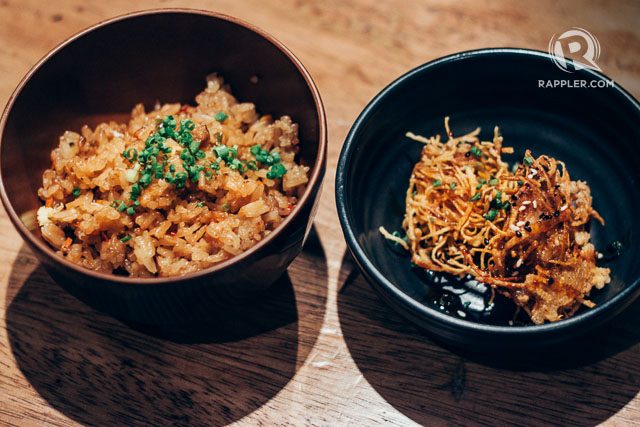
House Chahan (P99) and Tori Kara-age (P245)
Instead of the traditional panko crumbs, Ooma’s Tori Kara-age uses sweet potato strips as its crust – which makes it delightfully crispy. It’s sprinkled with scallion, togarashi, and seaweed, but it’s more savory than salty. Its sweet and sour sauce takes cues from the flavors of the summery Okinawan islands in southern Japan.
The Tori Kara-age is perfect with rice, and if you’re the type to scarf down more than two cups, Ooma actually serves unlimited Japanese rice. A server will be more than happy to accommodate you. If fried rice tickles your fancy, have some of their House Chahan (P99) on the side.
Other hot plates spotted on the menu, such as the Buta Kakuni (P365, slow-roasted and braised pork belly) to the Soft Shell Crab Tempura (P398), are also designed to complement heaps of the Filipinos’ beloved staple.
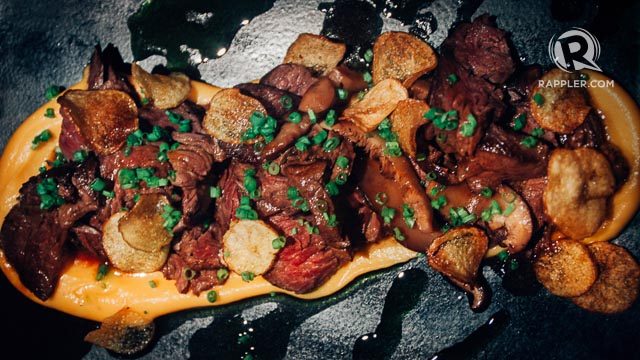
Hanger Steak (P495)
Hanger steak has a reputation for its gamey and rich flavors. Add some sautéed mushrooms, baby potato crisps, and a generous drizzling of white truffle oil – this beef dish can deliver an intense earthy punch.
However, the ponzu butter (made from Yuzu, a Japanese citrus fruit) – with just the right amount of tartness – saves you from an overwhelmed palate. The dish can be decadent, but as the hanging tender is cooked sous vide, it is surprisingly light and melt-in-your mouth.
Again, this is perfect with House Chahan or Beef Chahan (P145).
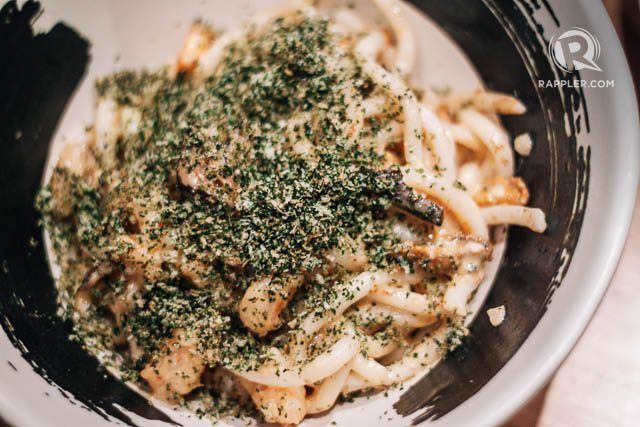
Uni Udon (P495)
Hot bowls like udon and donburi can give someone on the daily grind some respite.
The Uni Udon is an explosion of umami in this bowl of wheat flour noodles. Topped with shrimp, uni, onions, and mushrooms, as well as a sprinkling of nori crumbs, this udon might be too assertive for some, so the uni cream sauce helps cut through the brine.
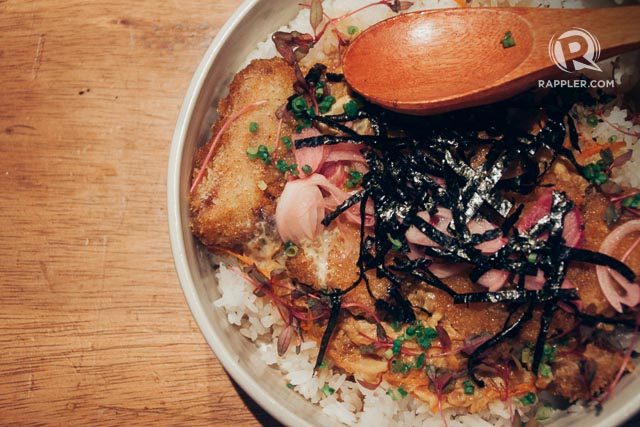
Buta Kakuni Katsudon (P289)
Ooma also has donburi (rice bowl dishes) like the all-time favorite Buta Kakuni Katsudon. They use pork belly, so this katsu is more tender than usual. The humongous portion is definitely great for sharing.
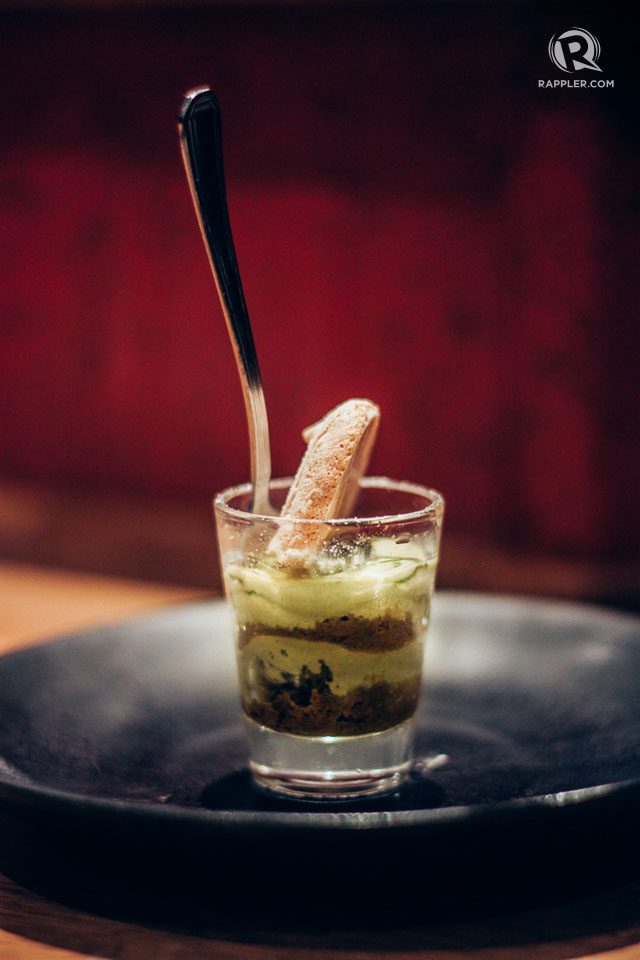
Matcha Green Tea-ramisu (P195)
What better way to close a hearty meal than a cup of tea? Tea-infused dessert.
Matcha green tea is typically astringent, but is a popular dessert ingredient. Very few green tea desserts stand out, and Ooma’s Matcha Tea-ramisu (mind the pun!) rightfully fits the bill. This tiramisu is well balanced in flavor and silky to the palate – strangely, despite the heavy cream. There’s a subtle hint of coffee and rhum without a distinctive, overpowering aftertaste. Use the ladyfinger as a spoon for added crunch.
If you’re having dinner, you may also want to wash down your food with some Asahi Beer (P165), One Cup Ozeki Sake (P265), or simply their house Iced Tea (P55 – by the glass, P85 – bottomless).
Sentimental flavors
“I think the Filipino diner today is…really open-minded – loves to try out new things and experiment, but they also still want…sentimental flavors. We’re hoping that that’s what we did here,” says Abba Napa, one of the Moment Group’s founding partners.
Cold rainy days call for a steaming bowl of donburi. A good company of friends can share a platter of maki over some banter. Japanese food, even done simply, is a fail-safe way to warm the belly. Ooma knows this well, and Chef Bruce keeps it simple with just enough of his bold, exciting flourishes.
Ooma is located at 3/F Mega Fashion Hall, SM Mega Fashion Hall.
Add a comment
How does this make you feel?
There are no comments yet. Add your comment to start the conversation.